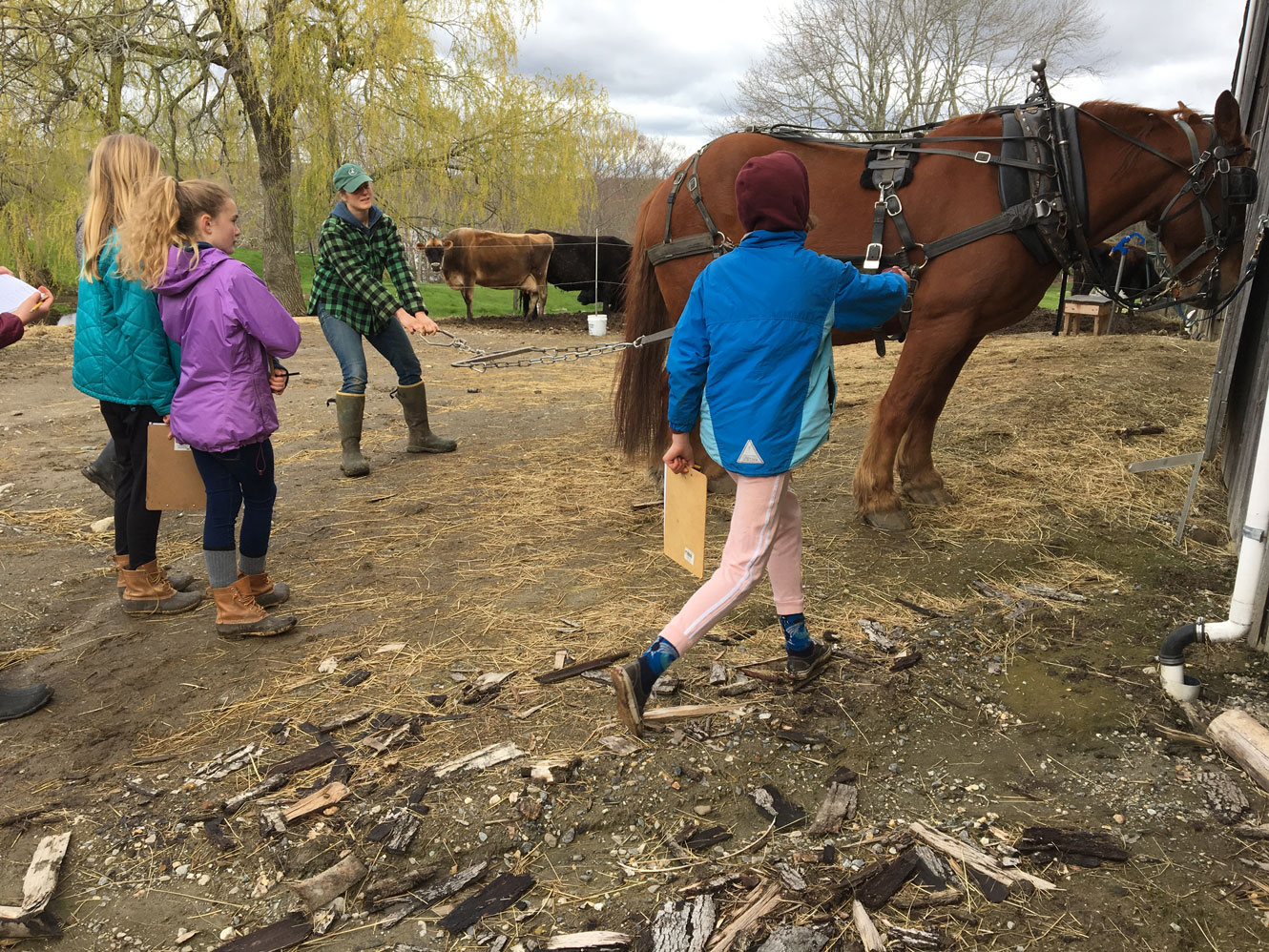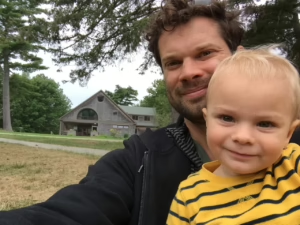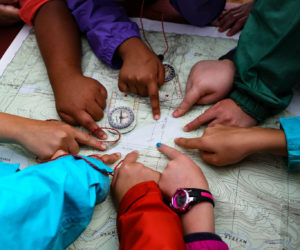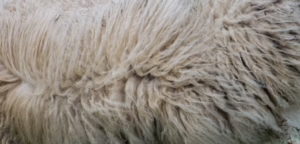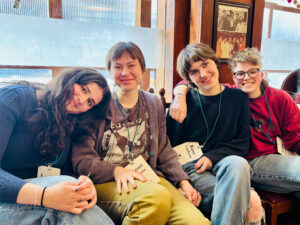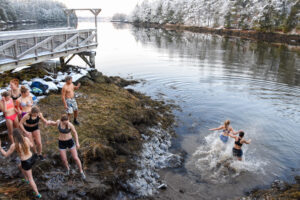Seventh graders from the Elementary School at Chewonki explored physics last week when they visited Salt Marsh Farm to study simple machines and Isaac Newton’s three laws of motion. Our Suffolk Polk draft horse, Bob, and Farm Manager Megan Phillips led the lessons, demonstrating how farmer and animal use muscle; body position; harness; and machinery to exert force against mass and weight and counteract friction and inertia.
The students had been learning about physics in class with their teacher, Annie Nixon, and the theories came to life when students tried pulling a log, a forecart, a cultipacker, a plow, and a disc harrow.
Students watched Bob tug a big log attached to his harness, first with a short chain and then with a long rope. At first, Bob “sacrificed speed for power,” as Phillips put it, lowering his head, leaning forward, and moving his feet quickly to overcome friction and accelerate the log forward. A long rope (or “effort arm”) connecting the horse and the log made it easier for Bob to overcome resistance and get the log in motion.
Later, Phillips gathers the students around the disc harrow. “Where on this piece of equipment do you see ‘simple machines’?” she asks. The seventh graders step forward to point out a screw, a lever, and a wheel and axle, all of which will help the disc harrow move through the soil when external forward force is applied.
“How many seventh graders does it take to pull the disc harrow?” Phillips asks. The students are unsure but there is one way to find out. “You’ve got to be in good horse position to do this,” she tells them. “What forces make it hard to get harrow rolling?” “Friction,” says one. “Weight,” another student offers. One, then two, then many students together try to pull the heavy equipment forward.
After the students try moving the disk harrow, the plow, and a couple of other pieces of equipment, Phillips, Nixon, and one girl hook the plow to Bob, who pulls it through the heavy, wet, spring soil. Students note how he accelerates once he gets the plow going and then slows the plow as he moves downhill, widening his stance, leaning his head and neck back, and pushing his legs back against the unbalanced force of the plow’s forward motion.
Annie Nixon, the teacher of grades 7 and 8, described the experience: “We were fortunate enough to apply our physics learning at the farm. Megan spent time with us over three days, discussing simple machines and Newton’s three laws of motion as they apply to the farm. Students took an inventory of simple machines around the farm, and then we learned about the first- and third-class levers in the bone and muscle structure of Bob, the draft horse. Megan shared with us how to tell if a horse is working hard, utilizing speed or power.
“We then looked at the horse-drawn farm equipment and discussed whether each implement would require more power or less depending on the amount of friction and resistance that the equipment would make when pulled.
“Next, students tested out their hypotheses by using one seventh-grade student as the unit of measure. They tried to pull the implement, adding students to increase the effort (power) when needed, and some of the results surprised them!
“After the students pulled the implements, Megan hooked Bob up and we all observed his graceful and powerful strength as he dropped his head and leaned into the harness, transferring his push effort into a pull of the implement behind. This hands-on learning was absolutely engaging! We are so grateful for Megan’s time and expertise.”
“The end result: it takes all eight seventh-grade students to pull the plow 10 feet in a garden plot, but only one (moderately working) draft horse to do the same thing.”
